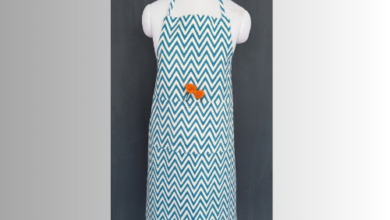Spotlight on Comme des Garçons’ Most Memorable Collections
Comme Des Garcons Official Store Get Authentic Collection Of Comme Des Garçons With Fast Free Shipping All Over The World On All Comme Des Garcons Stock

Comme des Garçons, the iconic fashion brand founded by Rei Kawakubo in 1969, has long been known for its avant-garde, boundary-pushing designs. With a reputation for challenging conventional fashion norms, Comme des Garçons’ collections have consistently stunned and inspired the fashion world. Kawakubo’s innovative approach to clothing design has influenced countless designers and set new standards for creativity and artistic expression within the fashion industry. This article takes a closer look at some of Comme des Garçons’ most memorable collections, examining their significance and the lasting impact they have had on both the fashion world and popular culture.
The Birth of Comme des Garçons The 1981 Collection
Rei Kawakubo’s first collection for comme des garcons in 1981 was a revolutionary moment in the fashion world. It was unlike anything that had been seen before. Kawakubo’s designs introduced a raw, unfinished aesthetic that challenged traditional beauty standards and conventional notions of what fashion should look like. The collection, which featured distressed, deconstructed garments, broke away from the sleek, polished looks that dominated the fashion scene at the time.
The collection’s monochromatic palette, primarily composed of black, gray, and white, conveyed a sense of minimalism and androgyny, signaling a departure from the colorful, feminine styles that were popular in the 1970s. The designs were intentionally unrefined, with raw edges, asymmetrical shapes, and unfinished seams. These garments, though unconventional, offered a new way of thinking about fashion – one that was less concerned with the idealized, “perfect” body and more focused on individuality and expression.
This collection is considered the birth of the Comme des Garçons brand and was the beginning of Rei Kawakubo’s journey as a pioneer of avant-garde fashion. It set the tone for the brand’s future collections, establishing its reputation as a label that challenges norms and embraces the unconventional.
The 1982 “Hiroshima” Collection
One of the most poignant and unforgettable collections in Comme des Garçons’ history is the 1982 “Hiroshima” collection. This show was a powerful statement about the devastation caused by war, particularly the atomic bombing of Hiroshima in 1945. The garments were intentionally designed to evoke the aftermath of destruction, with torn fabrics, frayed edges, and distressed textures that suggested a sense of devastation.
The “Hiroshima” collection was an emotional commentary on the fragility of life and the horrors of war. Models walked the runway in clothes that appeared to be in various states of ruin, symbolizing the destruction of human life and the environment caused by conflict. The use of blackened fabrics and irregular, disheveled silhouettes reflected a world that had been ravaged, and the collection evoked a deep sense of sorrow and reflection.
Though controversial at the time, the collection further cemented Comme des Garçons’ place in fashion history. It demonstrated how fashion could be used as a platform for social commentary, an idea that had previously been rarely explored in mainstream fashion. Kawakubo’s willingness to use fashion to tell such a powerful story marked a pivotal moment in the evolution of the industry.
The 1983 “Body Meets Dress, Dress Meets Body” Collection
In 1983, Rei Kawakubo introduced the world to another groundbreaking collection: “Body Meets Dress, Dress Meets Body.” This collection is perhaps one of the most significant and memorable moments in the history of Comme des Garçons. The designs in this show explored the relationship between the human body and clothing in a way that had never been seen before.
Rather than using clothing to conceal the body, Kawakubo’s designs exaggerated and distorted the natural form. The garments featured oversized, voluminous shapes that both highlighted and obscured the body. This collection challenged the idea that clothing should be designed to flatter the human form or create a traditionally “beautiful” silhouette. Instead, Kawakubo presented a new vision of fashion, one that was more about the interplay between the body and the garment than about conventional ideas of beauty.
The collection was both confrontational and liberating. It pushed the boundaries of fashion, inviting viewers to reconsider their perceptions of what clothing should do. By creating garments that interacted with the body in unconventional ways, Kawakubo made a bold statement about fashion’s potential for self-expression and subversion.
The 1997 Draped Collection
Comme des Garçons’ 1997 collection, often referred to as the “Draped” collection, is another iconic moment in the brand’s history. This collection featured loose, draped fabrics that hung off the body in an almost organic, fluid manner. The garments had a soft, ethereal quality, with fabrics flowing and folding in unexpected ways. The shapes were often asymmetrical, with layers of fabric that appeared to be both effortless and intricately constructed at the same time.
The 1997 “Draped” collection was a departure from the structured, tailored looks that had been popular in previous seasons. By embracing a more fluid, relaxed aesthetic, Kawakubo offered a stark contrast to the rigid silhouettes that dominated the 1990s. The collection’s use of draping emphasized freedom and movement, with garments that seemed to flow naturally around the body.
This collection further solidified Kawakubo’s reputation as a designer who was not afraid to challenge conventional ideas of fashion. It demonstrated that clothing could be both artistic and functional, with the ability to transform the wearer’s body in unexpected ways. The fluidity of the “Draped” collection continues to inspire designers today, showing how fashion can be used to explore and express the human form in new and innovative ways.
The 1999 “No Sex” Collection
In 1999, Comme des Garçons presented the “No Sex” collection, a provocative and thought-provoking show that challenged traditional ideas of gender and sexuality. The collection featured oversized, boxy garments that obscured the body, making it difficult to determine the gender of the models. The designs rejected the notion that fashion should be used to accentuate or emphasize the body’s natural shape, instead opting for a more androgynous, gender-neutral aesthetic.
The “No Sex” collection was a direct commentary on the commercialization of sexuality in fashion and culture. Kawakubo’s designs made a statement about rejecting the notion that clothing should be used to define or exploit gender and sexuality. Instead, the collection embraced a more inclusive, gender-fluid approach to fashion, showing that clothing could be worn by anyone, regardless of their gender identity.
At the time, the “No Sex” collection was a radical departure from the sexed-up, form-fitting trends that were prevalent in fashion. However, in retrospect, it was an incredibly forward-thinking and timely exploration of gender and identity that continues to resonate with today’s fashion landscape. The collection played a crucial role in the ongoing conversation about gender inclusivity and fluidity in fashion.
The 2006 “White Drama” Collection
In 2006, Comme des Garçons presented the “White Drama” collection, a striking departure from the colorful, eclectic designs that had previously defined the brand. For this collection, Rei Kawakubo chose to work exclusively with white fabrics, creating a collection that was both minimalist and dramatic. The designs were characterized by their use of raw, unfinished edges, irregular shapes, and sculptural silhouettes.
The “White Drama” collection was an exploration of purity and simplicity, with each garment appearing as though it had been stripped down to its most basic form. Despite its minimalism, the collection was filled with emotional depth, with garments that felt both haunting and powerful. The use of white fabric was symbolic, evoking a sense of purity, while the irregular, unfinished designs suggested a world that was in constant flux.
This collection marked a significant departure from the more vibrant, textured designs that had characterized Comme des Garçons in previous years. It demonstrated Kawakubo’s ability to work within a restrictive color palette while still creating collections that were rich in meaning and complexity. The “White Drama” collection continues to be celebrated for its boldness, simplicity, and emotional resonance.
The 2012 “Comme des Garçons Homme Plus” Collection
comme des garçons Homme Plus, the men’s division of the brand, has always been known for its unconventional approach to menswear. In 2012, the brand presented a collection that played with proportions and redefined the concept of masculinity. The garments in the collection featured oversized, exaggerated shapes, with silhouettes that were both formal and casual at the same time. There was a clear influence of traditional tailoring, but it was subverted with avant-garde cuts and unexpected materials.
The 2012 Homme Plus collection was a bold statement about masculinity, showing that clothing could be both formal and experimental, masculine yet fluid. The collection’s oversized proportions and unconventional shapes challenged the traditional expectations of men’s fashion, encouraging a more relaxed and individualistic approach to dressing. It highlighted the idea that men’s fashion could be as creative and dynamic as women’s fashion, paving the way for a new generation of designers to experiment with menswear.
This collection further demonstrated Rei Kawakubo’s ability to blur the lines between gendered clothing, using fashion to explore the concept of masculinity in a new and exciting way. Comme des Garçons Homme Plus continues to be a leader in the exploration of gender-fluid fashion and has inspired many designers to rethink their approach to menswear.
The Legacy of Comme des Garçons
Comme des Garçons’ most memorable collections have left an indelible mark on the fashion industry. From the deconstructed designs of the 1981 collection to the gender-neutral statement of the 1999 “No Sex” collection, Rei Kawakubo has continually pushed the boundaries of fashion, challenging traditional ideas of beauty, gender, and the role of clothing in society.
The brand’s legacy is one of innovation, individuality, and self-expression. Comme des Garçons has shown that fashion is not just about clothes—it’s about art, culture, and the ability to communicate ideas. Kawakubo’s collections have inspired countless designers and have contributed to the ongoing evolution of fashion, making Comme des Garçons one of the most influential brands in the history of modern fashion.
As the fashion world continues to evolve, Comme des Garçons will undoubtedly remain a beacon of creativity and inspiration, reminding us all that fashion is an ever-changing art form, capable of challenging norms, defying expectations, and pushing the boundaries of what is possible.


